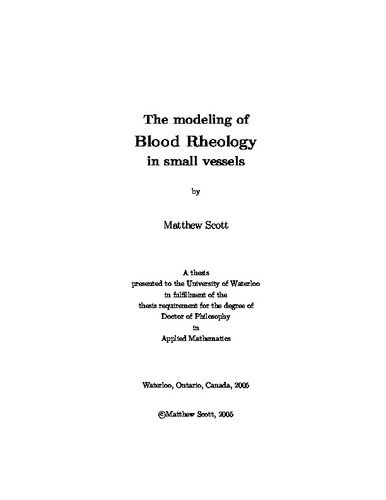| dc.description.abstract | Blood is a dense suspension of flexible red blood cells. In response to a background flow, these cells distribute themselves non-uniformly throughout the vessel. As a result, material properties that are well defined in homogeneous fluids, such as viscosity, are no longer so, and depend upon the flow geometry along with the particle properties. Using a simple model that accounts for the steady-state particle distribution in vessel flow, we derive an expression for the effective viscosity of blood and the suspension flow velocity field in a pressure-driven tube flow. <br /><br /> We derive the steady-state particle distribution from a conservation equation with convective flux arising from particle deformation in the flow. We then relate the particle microstructure to the overall flow through a generalized Newtonian stress-tensor, with the particle volume fraction appearing in the expression for the local viscosity. Comparing with experimental data, we show that the model quantitatively reproduces the observed rheology of blood in tube flow. <br /><br /> We reconsider the problem in an alternate geometry corresponding to the flow between two concentric cylinders. The steady-state particle distribution, suspension velocity field and the measured effective viscosity are all very different from their counterparts in tube flow, casting serious doubt upon the practice of using data from a Couette viscometer to parameterize constitutive models applied to vascular blood flow. <br /><br /> Finally, we calculate the effect of random fluctuations in the particle velocity on the averaged behaviour of the particle conservation equation. Using a smoothing method for linear stochastic differential equations, we derive a correction to the free Einstein-Stokes diffusion coeffcient that is due to the interaction of the particles with their neighbours. | en |

